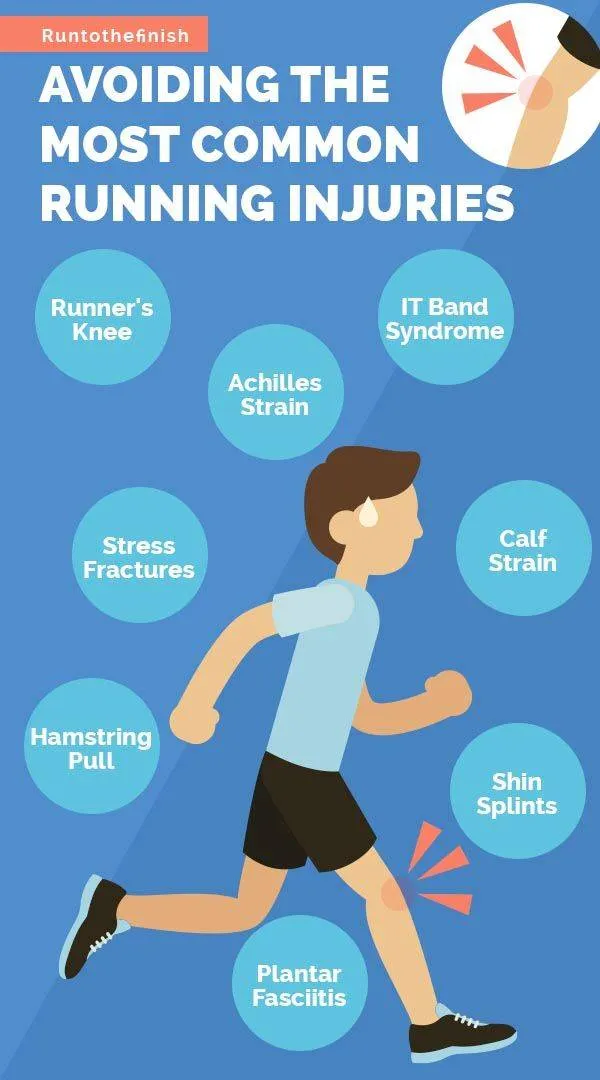Running can often cause mild discomfort as runners begin their training regimens. These symptoms usually subside on their own within a few weeks unless there is an underlying health issue causing more serious symptoms.
Recovering from a running injury requires giving your body time to heal. This may involve decreasing how often and far you run while following a recovery plan that includes rest, ice, physical therapy, and targeted exercises.
Rest and Ice
Rest is an integral component of injury recovery. It gives the body time to repair tissue overexerted through excessive training or at a high level of intensity.
Ice is an effective remedy for relieving inflammation and pain. Applying an ice pack for 20 minutes every two to three hours during the first 24 hours after your injury will help ease discomfort, promote healing, and expedite recovery.
Compression is another treatment that reduces swelling by compressing the injured area. This helps restrict blood flow in and around the affected area, speeding up healing time.
Elevation can be an effective treatment for injuries. It raises the injured area higher than your heart to stimulate blood flow and speed healing. You can do this by placing your leg on a table or lying flat on the floor with your legs raised against a wall, pointing upwards.
Physical Therapy
Physical therapy is an excellent way to recover from running injuries. It can help restore your range of motion, strength, and flexibility.
A good physical therapist will conduct a detailed history and assessment to identify your current stage of recovery so they can prescribe tailored care and treatments accordingly.
Generally, soft tissue injuries heal within six weeks. However, this time frame is not set in stone; your therapist can work with you to ensure you progress at your own pace.
A physical therapist can also help you modify your lifestyle, such as cutting back on desk time or redesigning your home. This can help expedite recovery and get you back to doing the things that matter most to you.
Massage
Massage can be invaluable for your body’s recovery after running, particularly for injury prevention. This is because massage increases circulation within muscles, improves flexibility and joint range of motion (ROM) (relative motion), and decreases muscle tension.
It is essential to note that massage will not eliminate lactic acid from your muscles, which may lead to soreness in the days following a workout.
Deep tissue massage is the most common type of massage used by runners to loosen tight spots and connective tissue. It can be included in hard training sessions or used post-race to treat leg and foot injuries.
Running athletes should aim to receive a massage every week or at least twice monthly. The frequency of treatments depends on how often they exercise, their budget, and the objectives they wish to accomplish from these sessions.
Strength Training
Running injuries can be a frustrating obstacle to your training and lifestyle. But it is possible to stay injury-free if you follow some basic precautions.
Start by warming up your body before beginning a run. This includes several minutes of activity that increases your heart rate and an easy 5-minute stretching routine.
Strengthening your muscles can also help avoid some of the most common running injuries. For instance, hip strengthening helps avoid the runner’s knee, which occurs when the patella (kneecap) is out of alignment.
If you do suffer an injury, your doctor or physical therapist may suggest taking a period of rest, during which you can switch to cross-training programs or start walking/running intervals for more fitness.
Once your pain subsides, begin gradually increasing mileage and intensity. You must use ice, massage, foam rolling, gentle stretching, and strengthening as tolerated during this time or as your doctor or physical therapist recommends.
If you need help recovering from a running injury, consider scheduling an appointment with the specialists at Direct Orthopedic Therapy. Our team of experts can provide you with the care and guidance you need to get back on track. Contact us today to learn more about our services, including mobile physical therapy.



